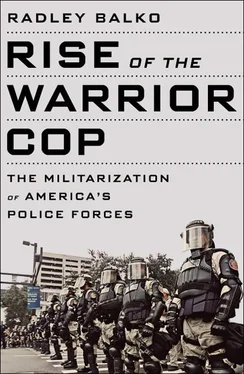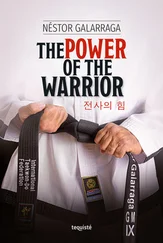The riots in Watts and other urban areas may have instilled in middle America fears of a rising black criminal class, but there was still some sense of safety in the suburbs. Whitman’s rampage on a college campus popped that bubble. His victims were college students, administrators, and instructors. The bodies dropping in Austin could have been anyone’s kids. Whitman himself was a crew-cut, good-looking ex-Marine. He was married. He played the piano. The shootings made the cover of all the major news magazines. Life ran a photo essay that was as heart-wrenching as it was terrifying. And all of this came as the country was still reeling from Richard Speck’s trial for torturing, raping, and murdering eight nurses at South Chicago Community Hospital a month earlier. The criminal threat no longer seemed to be limited to the inner cities. The victims were no longer urban toughs fighting among themselves. Both the Associated Press and United Press International called Whitman’s mass murder the second biggest story of 1966, behind only the Vietnam War.
Crime had grabbed America by the lapels.
THERE WERE A COUPLE OTHER INCIDENTS THAT CONTRIBUTED to Daryl Gates’s SWAT vision. At about the same time as the Watts riots, labor strife was heating up the grape farms in Kern County, California. The first major strike began in September 1965, about a month after Watts, when the county’s mostly Filipino farmworkers were joined by labor activist Cesar Chavez and the group that would become the United Farm Workers. Chavez set up shop in Delano, making the small town in the north of Kern County ground zero for the farmworker labor movement. 32
The Delano Grape Strike lasted five years. The involvement of Chavez and the National Farmworkers Association put the protests in the headlines, sometimes even on state and national television. Given the tumultuous history of labor strikes in the United States, the Delano police department looked for measures to keep the strikes from turning violent. The department turned to specialization. Individual Delano officers were given specific training in specialties like crowd control, sniper skills, specialized weapons, riot response, and surveillance. 33The strike and picketing in Delano never turned violent, though the reason was more likely Chavez’s emphasis on pacifism than the sniping skills of Delano cops. Nevertheless, Delano’s strategy and its apparent success caught the attention of senior police officials 150 miles down the road in Los Angeles.
The second incident came about a month after Watts, when LAPD officer Ron Mueller took a late-afternoon call about a domestic incident on Surry Street in northeast Los Angeles. When Mueller ascended a set of steps and knocked on the door, thirty-eight-year-old Jack Ray Hoxsie opened the door and immediately shot him. As Mueller attempted to crawl away, another officer, K. A. Shipp, pulled up. Hoxsie stepped out of the doorway and, with a .30-caliber Winchester, took off part of Shipp’s ear. As ambulances arrived, a citizen named Billy Richards attempted to help the medical personnel move Mueller onto a gurney. Hoxsie shot him too. Eventually, more than fifty police officers showed up, and just about all of them were exchanging gunfire with Hoxsie. Gates ordered the house tear-gassed, but as he writes in his autobiography, “by then there were so many holes in the house that the tear gas began spewing out faster than it was going in.” Finally, two officers kicked down Hoxsie’s front door and entered. The gunman was lying wounded in a rear hallway with a rifle and revolver by his side. Officer R. D. Johnson shot him once in the chest, then arrested him. “The incident alarmed me,” Gates writes in his book. “Later, as I analyzed how we had responded, I realized again, as I had during Watts, that we were going to have to devise another method for dealing with snipers or barricaded criminals other than our usual indiscriminate shooting.” 34
After the Surry Street shootout, Gates and a small group of LAPD officials began informally consulting with Marines stationed at the Naval Armory in Chavez Ravine. The group included Jeff Rogers, who would later lead the country’s first SWAT team, and Sgt. John Nelson. Often credited along with Gates with inventing the SWAT idea, Nelson became a self-taught expert in guerrilla warfare. The informal project wasn’t sanctioned by the LAPD. In fact, when Gates first broached the idea of an elite police team for incidents like Watts and Surry Street, he was rebuffed. The Parker administration had little interest. But Gates, Nelson, and Rogers kept at it. They scoured the department for its best sharpshooters and put them on the shooting range for more training during off hours. They also brought in military personnel to teach strategies for handling snipers. 35
At an awards banquet held in July 1966, Los Angeles police chief William Parker died of an aneurysm shortly after accepting an honor from a group for military veterans. New chief Thomas Reddin would serve only until May 1969, but his short tenure had a lasting impact on the career of Daryl Gates and the future of SWAT.
Shortly after Reddin took over, the LAPD faced a public crisis after officers clashed with antiwar protesters (and bystanders) in Century City. President Lyndon Johnson had been scheduled to give a public address, so the clashes—in which police were seen clubbing protesters and onlookers, and ramming them with motorcycles—received national attention. 36In response, Reddin created a new unit called Tactical Operations Planning. The unit’s mission was to plan for and respond to big events such as riots, protests, and visits from dignitaries. 37Reddin put the new unit in the city’s Metropolitan Division, an elite, roving unit of officers given broad authority to “suppress criminal activity.” 38The Metro Division’s propensity for controversy had earned it the nickname “the Shake, Rattle, & Roll Boys.” Their charge from Reddin: “Roust anything strange that moves on the streets.” The new unit expanded Metro from 55 to 220 officers. 39Reddin put Gates in charge.
Gates’s first task was to respond to a rash of robberies on the city’s buses. Needing personnel, Gates asked other divisions across the city to send him officers. According to Gates’s autobiography, “Most of the divisions sent me the least desirable people they had.” 40But the new crew put an end to the bus robberies, earning itself, and Gates, some added credibility with Reddin. Defying the organizational structure used in the rest of the department, Gates explains in his autobiography that he broke his new unit down into sixteen “military-type” squads. He then combined the squads into two “platoons,” adding yet more war terminology to the environment around him and the officers he worked with.
Gates was eventually able to get the sixty marksmen he had been working with across the department reassigned to Metro. Now staffed with top-notch, highly skilled cops, Gates mixed the marksmen with his best men from Tactical Operations Planning. He then broke the unit down into five-man teams: a leader, a marksman, an observer, a scout, and a rear guard. Two teams together made up a squad. They were called D-Platoon (somewhat confusingly, since there were only three platoons at the time). 41
But Gates wasn’t fond of “D-Platoon.” He had a different name in mind. From his autobiography:
One day, with a big smile on my face, I popped in to tell my deputy chief, Ed Davis, that I thought up an acronym for my special new unit. He was still, as we all were, glued to the classic concepts of policing, which discourage the formation of military-type units. But he realized some changes would have to be made.
Читать дальше













